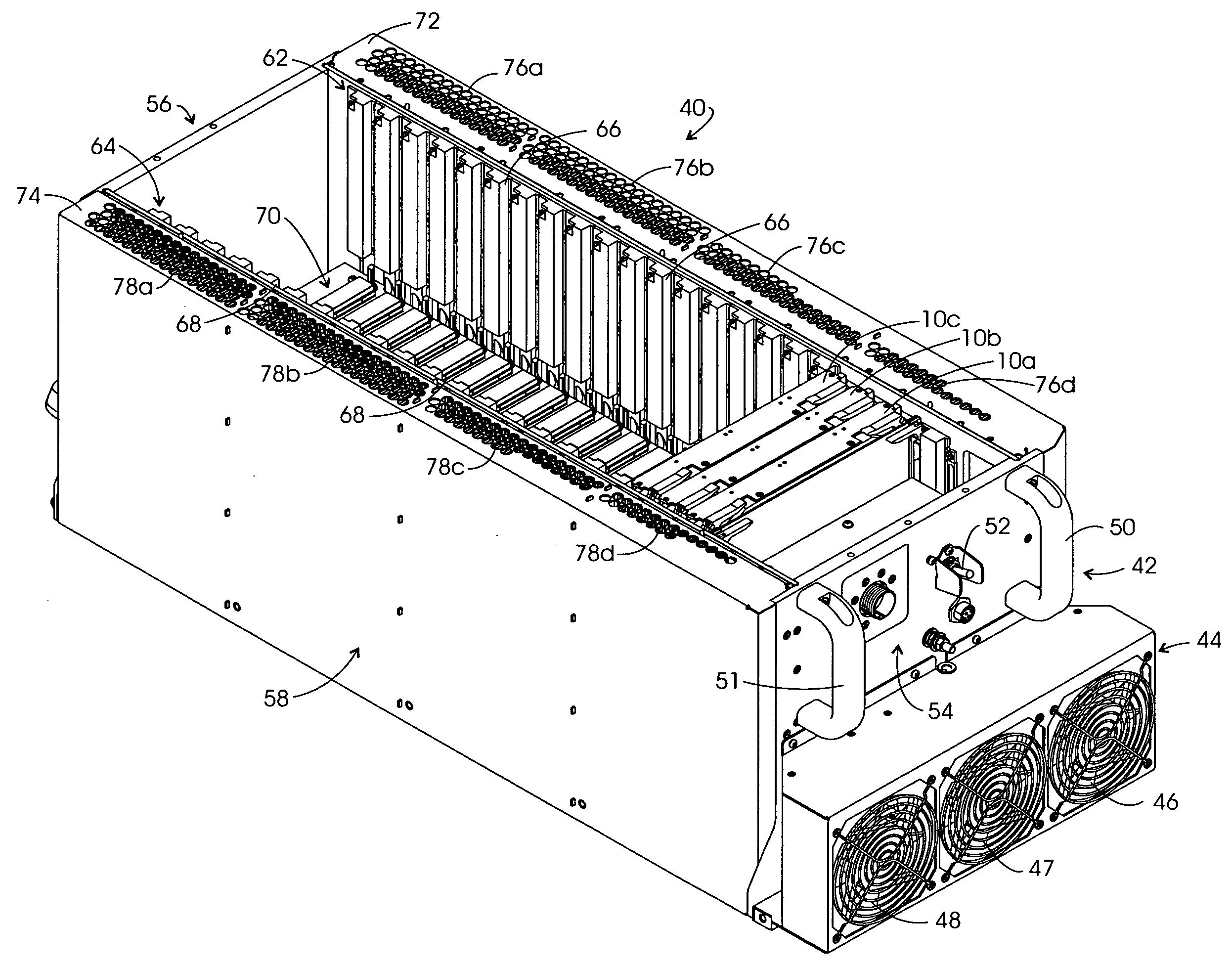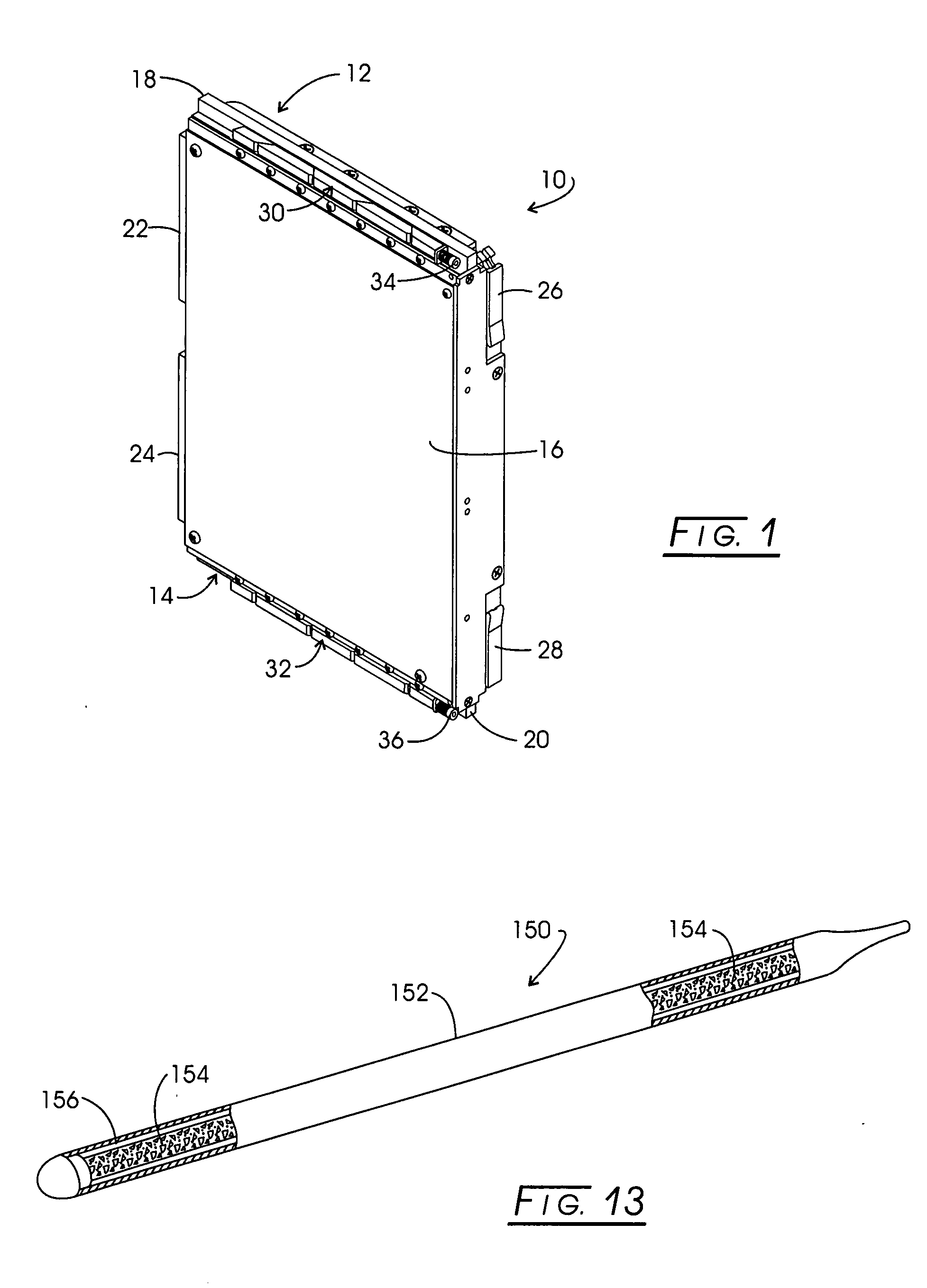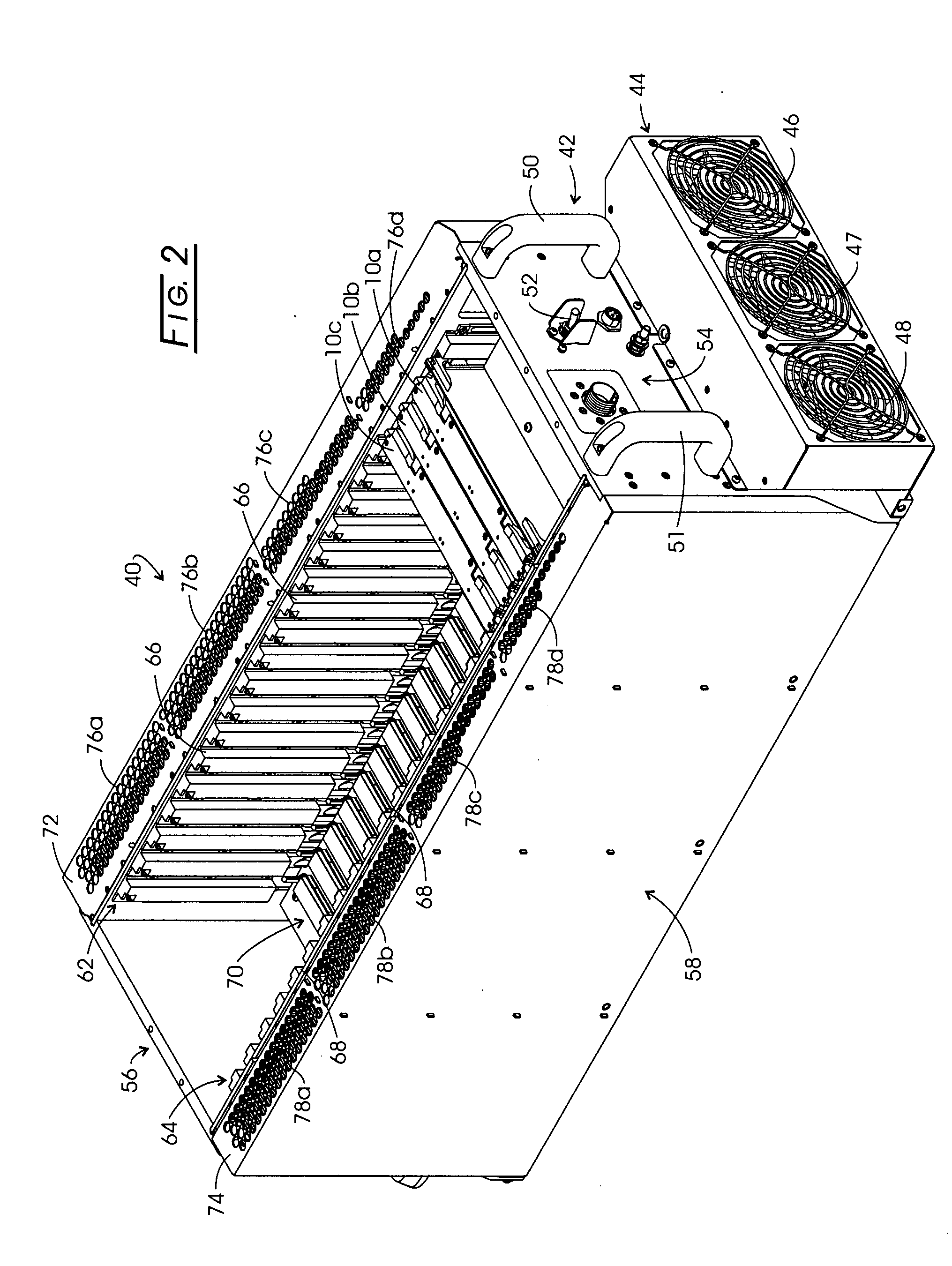Method and system for dissipating thermal energy from conduction-cooled circuit card assemblies which employ remote heat sinks and heat pipe technology
a technology of conduction-cooled circuit card and thermal energy, which is applied in the direction of electrical apparatus casing/cabinet/drawer, domestic cooling apparatus, instruments, etc., can solve the problems of insufficient performance of conventional thermal conduction system, increased heat generation at the modules, and increased risk of harsh environments
- Summary
- Abstract
- Description
- Claims
- Application Information
AI Technical Summary
Benefits of technology
Problems solved by technology
Method used
Image
Examples
Embodiment Construction
[0039]In the discourse to follow a conduction-cooled circuit card assembly (CCA) as described, for instance, in the above referenced IEEE Standard is disclosed, whereupon the approach by which the method and system set forth herein evolved is discussed. The description then turns to a discussion of heat pipe technology whereupon a chassis carrying 21 CCAs and the conduction-cooling approach of the disclosure is described. Other chassis architectures then are described.
[0040]Looking to FIG. 1, a conduction-cooled Eurocard (CCA) is represented generally at 10. CCA 10 is configured with a double-height or 6 U, nominal×160 mm format functioning to carry heat from a component carrying printed wiring board (PWB) to oppositely disposed edge regions represented generally at 12 and 14. Device 10 is formed with a metal plane with a conductive heat management layer or component 16. Management layer 16 performs in conjunction with optional stiffening ribs and heat transferring connectors 18 and...
PUM
 Login to View More
Login to View More Abstract
Description
Claims
Application Information
 Login to View More
Login to View More - R&D
- Intellectual Property
- Life Sciences
- Materials
- Tech Scout
- Unparalleled Data Quality
- Higher Quality Content
- 60% Fewer Hallucinations
Browse by: Latest US Patents, China's latest patents, Technical Efficacy Thesaurus, Application Domain, Technology Topic, Popular Technical Reports.
© 2025 PatSnap. All rights reserved.Legal|Privacy policy|Modern Slavery Act Transparency Statement|Sitemap|About US| Contact US: help@patsnap.com



